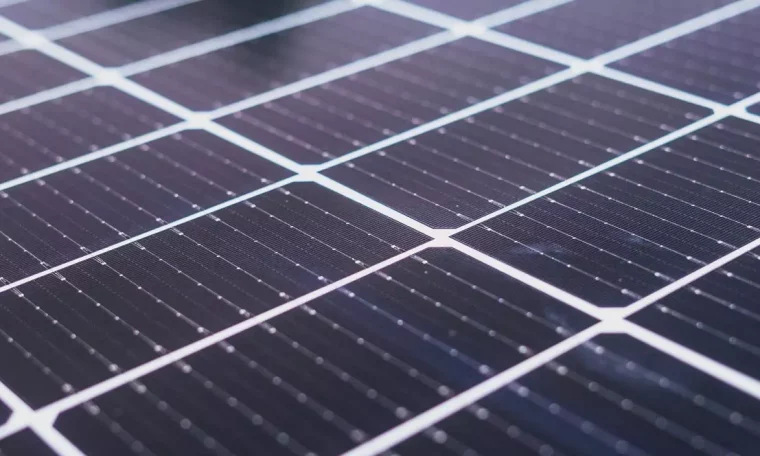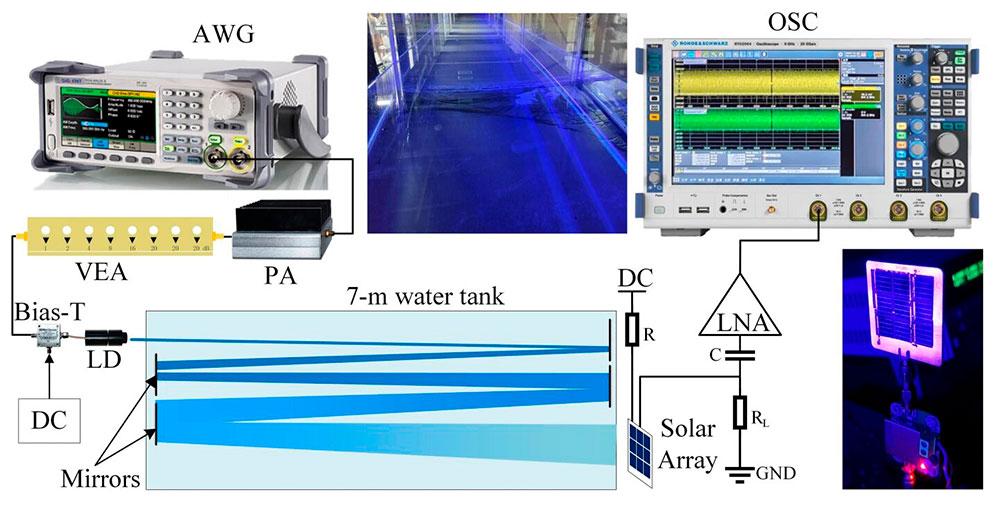
Although solar cells are designed for convert light into energyResearchers have shown that they can also be used to obtain a underwater wireless optical communication With high data rates. This new approach could provide a low-power, cost-effective way to transmit data underwater.
optimized for communication
Solar cells are designed to capture scattered light coming from a fairly wide area. Its efficiency is far better at converting that light into a data signal than in transmitting it in an electrical circuit. Compared to using radio or acoustic waves, light-based underwater wireless communication exhibits higher speeds, lower latency, and requires less power. Now, however, a team from China’s Zhejiang University says it is possible to tackle it.
,Until now, achieving high-speed links using off-the-shelf silicon solar cells has required complex modulation schemes and algorithms, which are computationally intensive, use additional power and create high processing latency. .The lead scientist, Professor Jing Xu, said. “Using modeling and simulation of connected solar cells, we optimized the peripheral circuit, which significantly improved the performance of our solar cell-based detector”add.
Need for efficient underwater communication
According to Jing Xu. There is a critical need for efficient underwater communication to meet the growing demand of submarine data exchange, Above all, for activities to protect the world’s oceans. For example, in coral conservation efforts, data links become necessary for divers, manned submarines, underwater sensors, and unmanned autonomous underwater vehicles to transmit data to the surface of ships supporting this work. .
In Revista Optics Letters Xu and his team report laboratory experiment in which they used an array of commercially available solar cells to create a lensless system optimized for high-speed optical sensing underwater. Solar cells offer a much larger detection area than photodiodes traditionally used as detectors in wireless optical communications.
“To our knowledge, we have demonstrated the highest bandwidth ever achieved for a commercial optical communication system based on silicon solar panels with a large detection area”Ju said. “This type of system may also allow data exchange and power generation with a single device”,

Experiments by researchers from Zhejiang University
underwater test
The researchers tested the new design in which they used a . used 3×3 Solar Panel To create a detection area of 3.4×3.4 cm in a 7 m long water tank simulating an underwater channel. Mirrors were also used to increase the length of the optical signal path, creating a transmission distance of 35 m.
showed this system Reliable stability, low power consumption and high performance, Although a simple detection scheme was used, this new system demonstrated much higher detection bandwidth, leading to higher data rates, than other studies using commercial silicon solar cells as detectors. Done with large detection area.
To adapt this system for real-world application in underwater communications, Xu and the rest of the researchers plan to study its R.performance with weak optical signals, These tests will demonstrate how the system performs in mud and/or running water. In turn, they are also working on making the system more practical by adjusting key parameters such as the number of solar cells in the array and the required reverse bias voltage.



